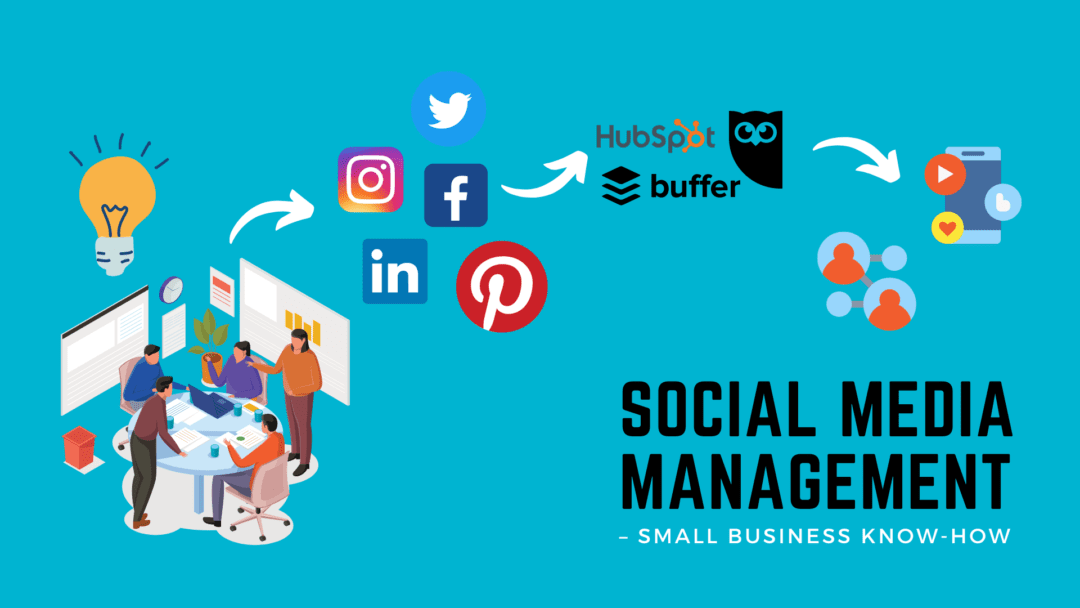Social media is an important marketing channel for any small business. Whether it’s reaching your customers on Facebook, interacting with people on Twitter, sharing your images and videos on Instagram or Tik Tok or making commercial connections on LinkedIn, the way you manage your social media is fundamental to your success. When it comes to social media management, small business owners with a clear strategy and operation can drive business growth.
Using social media wisely
Many small businesses have found, to their cost, that a scattergun approach to social media doesn’t produce results. In order for social media marketing management to work well, it must be properly planned, executed and measured. This not only stops you spending money in the wrong places – it helps you target the right people and flex your strategy as things change in your business and your market.
How to get started
Like all business planning, there are some fundamental steps to take. If you follow the basic outline of the plan below, you should be able to put together a sensible and manageable way to organise and deliver your message on social media. Help for small business owners is also available on the channels themselves, so make sure you do plenty of research. This will give you more confidence in your planning and execution.
Step 1: Plan your strategy
There’s no point starting a social media marketing campaign if you haven’t put a strategy together. Your strategy is the reason and purpose behind your marketing. It will help you to identify who you are targeting, which platforms they are on, what they’re interested in and what you will offer them. Get this right, and you will improve your messaging, expand your reach, build better customer relationships and drive the right people to buy from you. Always get a written strategy in place before you start.
Step 2: Plan your content
Social media success relies on good quality, relevant content. And it’s got to be content that your target audience wants to see, read and engage with. That requires you to know your audience really well – something that should be part of your strategy planning above. ‘Content’ is more than the occasional post. It’s a blend of content types that holds attention, says the right things and encourages people to find out more. This includes short videos, great images – preferably your own rather than stock images – targeted text content, polls and audio. Make a month-by-month plan for each channel and use it to make sure you are a consistent communicator.
Step 3: Manage your presence
It’s important that you have a consistent presence on your social media. Images, videos, and the words you use should always be the same. This helps to promote your brand and also makes sure that people start to associate your brand with the messages they’re seeing. If you’re considering social media outsourcing, make sure your supplier has all your logos, colours, brand images and anything else they need to keep that strong brand message alive.
Step 4: Use a scheduling tool
As part of your strategy, you should have decided which channels you are going to use. Only be on every channel if it’s genuinely where your customers are. Otherwise, focus on a smaller number of channels where you know your customers hang out. Managing even a couple of channels manually is time consuming. So use a scheduling tool to help. There are free versions of mainstream tools like Hootsuite and Planable, while other platforms like Sprout Social and Sendible cost a small amount per month. These tools let you schedule posts ahead of time, see in one place who is interacting with you across your channels. Simpler, and more time-effective.
Step 5: Engage
There’s no point pushing all your messages out there and never engaging. In fact, a key part of good social management best practice is engaging with your customers – after all, if this is the first place they come across your customer service approach, they’re going to want a good experience. And don’t just engage on your own posts – as any social media manager for small business marketing will tell you, it makes sense to make other friends online. Commenting on and sharing relevant content increases your potential reach and shows you as a collaborative player.
Step 6: Measure
The great thing about social media marketing – compared with advertising, for example – is how measurable it is. Scheduling platforms have reporting options that show interactions, engagement, reach and more. The channels themselves also have reporting tools, so you can easily see whether what you’re doing is working. And then it’s easy to change tack to do more of what’s working well, and less of what’s not. It also gives you great insights that you can use when you are looking at your overall business strategy.
We can support you with social media management. Small business owners and larger organisations work with us to make sure their social media output hits the spot. Why not call us on 0800 994 9016 or use our contact form in the menu above to find out how we can help?

